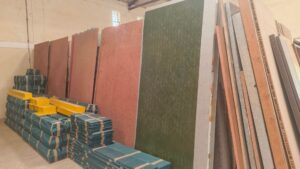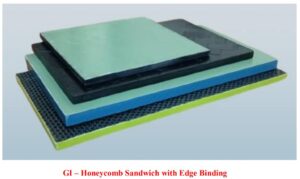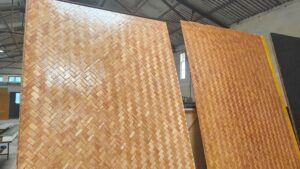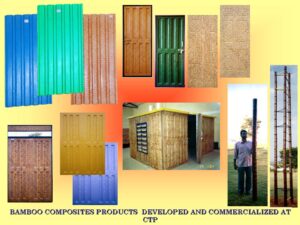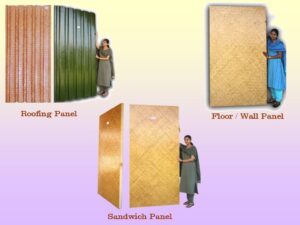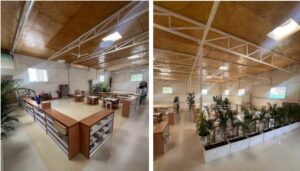For premium architectural and interior design projects, material choice is no longer just about price—it’s about performance, aesthetics, and sustainability. That’s why many architects are moving beyond conventional panels and turning to engineered bamboo composite boards for high-end applications. Below is a detailed overview of this material category and what makes it particularly suited for top-tier projects.
What Are Bamboo Composite Panels?
Bamboo composite panels are manufactured by impregnating woven bamboo mats or bamboo-based laminates with high-performance resin, then hot-pressing them into flat board or sheet form, often under aerospace-derived processes. According to one specification list, these panels deliver high strength, low weight, water/moisture resistance, termite proofing, fire retardant capability, and suitability for both interior and exterior use.
Key examples from the specification document include:
Natural bamboo mat boards/laminates in thicknesses around 2.5–4.0 mm.
Laminated plywood variants in thicknesses from 9 mm to 25 mm for structural and furniture-panel uses.
High-value sandwich and hybrid panels (e.g., bamboo-honeycomb-bamboo) offering large panel formats with reduced weight.
These boards thus present a premium alternative to standard plywood, MDF, or even exotic veneers, particularly when the project demands high aesthetics and longevity.
Why Architects Are Choosing Them for Premium Projects
1. Aesthetics & Texture
Engineered bamboo composite panels carry the natural, warm aesthetic of bamboo—with its distinctive yet elegant grain pattern—and can be finished in high-grade polish, coatings or surfacing. This makes them appealing for visible panels in luxury interiors: reception walls, feature ceilings, boutique furniture elements.
2. Premium Performance
Beyond aesthetics, these panels offer enhanced functional performance. As noted in the specification list: moisture/boil water resistance, termite/fungus resistance, corrosion resistant, high strength and stiffness.
In premium projects where durability and long-term finish quality matter, these performance traits matter.
3. Sustainability & Credentials
Bamboo grows rapidly compared to hardwoods, making it a renewable choice. Using engineered bamboo for panels allows designers to highlight sustainability credentials in high-end projects. The specification explicitly mentions “Eco-Friendly and Sustainable.” In an era of green building and certification, this is a key differentiator.
4. Versatility Across Applications
These composite panels cover a broad range of formats—from thinner decorative laminates to thicker structural panels. That means architects can specify matching material for walls, ceilings, furniture fronts, joinery, even exterior cladding. Using one material family throughout simplifies specification, ensures a cohesive look and streamlines procurement.
5. High Value Perception
Vis-à-vis standard wood panels, engineered bamboo composites convey a high-end, bespoke quality. For upscale hospitality, corporate headquarters, boutique retail fit-outs and luxury residences, material quality is part of the narrative. These panels fit that narrative while offering technical merit.
Key Properties & Specification Highlights
From the specification information and supporting technical literature:
Density & Strength: Engineered bamboo panels exhibit density values and mechanical strength that enable use beyond decorative surfaces. For example, research shows engineered bamboo boards can rival laminated timber in bending and modulus of elasticity.
Moisture/Termite/Fungus Resistance: The board specification cites moisture resistance, termite proof and non-fungus performance.
Thermal & Acoustic Benefits: Some engineered bamboo composites display favourable thermal conductivity and can contribute to indoor comfort.
Wide Thickness Range and Panel Formats: From thin 1+ mm laminates to thick 50 mm sandwich panels (bamboo-honeycomb) are listed in product offerings.
Workability & Finishing: These boards are compatible with standard woodworking tools and can be cut, drilled, bonded like conventional panels—facilitating architectural detailing.
Pros for Premium Projects
Exceptional aesthetic appeal paired with performance
Renewable raw material and eco-friendly credentials
Greater durability and lifecycle value compared to basic panels
Flexibility of usage across surfaces and furniture
Alignment with luxury branding and high-end interior mood
Considerations / Limitations
Upfront cost may be higher than commodity wood panels—premium materials incur premium price
Fabricator/installer familiarity may be less than for standard boards—specification detailing, adhesives, finishes may require mock-ups
Finish variation may occur due to natural bamboo skins—designers must check sample batches and colour consistency
Structural use still requires correct backing, substrate and detailing—just because the panel is high performance does not remove need for proper architectural and engineering specification
Certification and fire rating requirements may differ by region—ensure compliance for premium projects where safety or code adherence is critical
Frequently Asked Questions (FAQs)
Q: Are these engineered bamboo composite panels suitable for visible premium furniture?
Yes. They are especially well-suited for high-finish applications because they combine good surface quality, natural texture, and premium performance.
Q: Can these panels be used in wet or humid areas (for example hotel bathrooms)?
Yes. The specification lists moisture/boil-water resistance, termite and fungus proofing. That said, correct detailing (edge sealing, substrate, finish) remains essential.
Q: Are the panels compatible with standard joinery and fabrication tools?
Yes. They can be cut, drilled and bonded using conventional woodworking tools and adhesives. Fabrication partners should be informed about resin-impregnation and any finish or tooling adjustments needed.
Q: What about finish variety—can they be painted, stained or over-laminated?
Yes. The natural bamboo composite surface accepts finishing options such as PU‐coating, decorative lamination or veneer overlay, which supports premium design customization.
Q: How do these panels support sustainability or green building?
The use of bamboo (rapid renewability), engineered efficient manufacturing, and long life span make these panels align well with green building initiatives and premium architectural narratives.
Conclusion
For architects and designers working on premium projects—whether luxury hospitality, high-end residential, corporate headquarters or sophisticated interiors—the choice of panels matters. Engineered bamboo composite panels offer an appealing combination of aesthetic refinement, performance integrity and green credentials. When specified and installed correctly, they deliver value far beyond decorative surfaces—they become part of the material story, the design narrative, and the long‐term asset value of the project.
By choosing these panels, design teams signal that every detail matters: not just the look, but the material integrity, sustainability, durability and craftsmanship.

